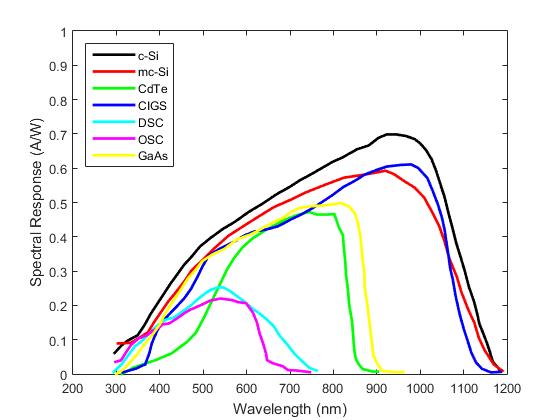PV devices are characterized by their response to light in a reference spectrum. When a device is tested in a lab or outdoors, the spectrum of the light source may not be the same as that of the reference spectrum. The effect of this difference on performance is typically quantified by a spectral mismatch factor.
If the shape of the I-V curve is not sensitive to the spectrum of the light source, but only to the short circuit current and the cell temperature, then it is possible to estimate a spectral mismatch factor using IEC 60904-7 : “Computation of the spectral mismatch correction for measurements of photovoltaic devices”.
The spectral response (SR) of a PV device is the fraction of available irradiance that is converted into current. Spectral response (units of A/W) is a function of wavelength and is related to the quantum efficiency (QE) [unitless] as follows:
$$SR_{\lambda}=QE_{\lambda}\times\lambda\frac{e}{hc}$$
where $$\lambda$$ is the wavelength of light, $$e$$ is the electron charge ($$1.602176634\times 10^{-19}$$ Coulomb), $$h$$ is Plank’s constant ($$6.62606957\times 10^{-34}$$ J*s), and $$c$$ is the speed of light ($$2.99792458\times10^8$$ m/s).
The figure below shows typical spectral responses from a variety of PV cell technologies.
